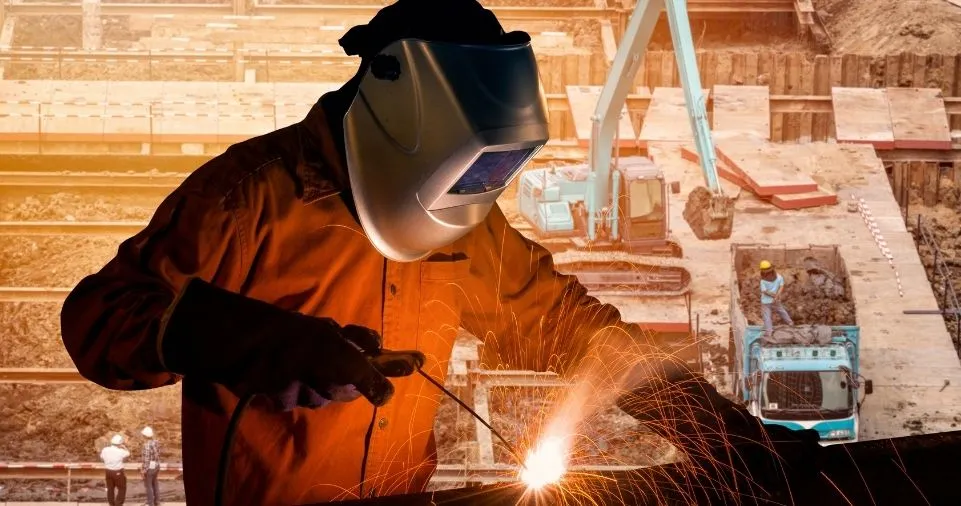Tungsten electrodes are crucial in TIG (Tungsten Inert Gas) welding, providing the arc that melts and joins metals. Understanding these types and their particular uses is essential for achieving optimal welding results.
These electrodes are integral to creating precise and clean welds, so welders across various industries rely on them. TIG welding is favored for its precision, control, and ability to produce high-quality welds, making it a popular choice in the aerospace and automotive industries.
However, the success of any TIG welding project depends significantly on the choice of tungsten electrode. Selecting the right electrode can make a noticeable difference in weld quality, efficiency, and ease of use.
With technological advances, choosing the correct tungsten electrode has never been more essential for welding professionals.
Key Takeaways
- Understand the different types of tungsten electrodes and their applications.
- Learn how to select the most suitable tungsten electrode for specific welding tasks.
- Gain insights into the properties and benefits of various tungsten electrodes.
Types of Tungsten Electrodes
Several types of tungsten electrodes are available, each with unique characteristics tailored to various welding requirements.
Tungsten Electrodes come in multiple types and compositions, each suited to specific welding tasks. The common types include:
- Pure Tungsten Electrodes: Known for their low cost, they are typically used in AC welding applications. They are ideal for projects requiring a stable arc but can be limited due to lower durability than alloyed electrodes.
- Thoriated Tungsten Electrodes Contain thorium and are highly durable, making them suitable for high-current situations. They provide excellent current carrying capacity and arc stability, so they are often chosen for heavy-duty welding tasks.
- Ceriated Tungsten Electrodes: These are composed of cerium oxide and are ideal for DC welding on thin materials. Their ability to start at low amperages makes them perfect for precision and acceptable detailing applications.
- Lanthanated Tungsten Electrodes offer enhanced arc stability and a longer lifespan, which is ideal for AC and DC welding. These electrodes are versatile, balancing performance and longevity in various welding scenarios.
- Zirconiated Tungsten Electrodes Provide excellent arc stability and are often used in the AC welding of aluminum and magnesium alloys. Their ability to maintain a stable arc even with contamination makes them preferred for welders dealing with reactive metals.
These electrodes vary in composition and performance, so it’s essential to understand their specific properties to choose the right one for your welding needs.
Applications of Tungsten Electrodes
Different tungsten electrodes are suited for various applications, depending on their properties and performance characteristics.
For example, thoriated tungsten is often used for its durability and ability to handle high-current situations. This makes it ideal for welding thicker materials requiring consistent and robust arcs.
Conversely, created tungsten is preferred for DC welding tasks on thin materials, providing high precision and control for delicate jobs.
Pure tungsten electrodes, while inexpensive, are commonly used for less demanding welding tasks involving metals such as aluminum or magnesium. Their simplicity and cost-effectiveness make them suitable for general AC welding needs.
Lanthanated electrodes, known for their improved arc stability, are versatile for various welding projects, from automotive repairs to industrial fabrications. Their balanced performance in AC and DC applications makes them highly favored by professional welders.
ALSO READ: XDR: Revolutionizing Cybersecurity in a Connected World
Properties and Benefits of Different Tungsten Electrodes
The properties of tungsten electrodes directly impact their benefits and performance in welding. For instance, pure tungsten electrodes are known for their low cost and are common in AC welding applications.
However, despite being more economical, they may not offer the same durability and arc stability as their alloyed counterparts.
Pure Tungsten Electrodes
These are economical and straightforward and ideal for AC welding on aluminum and magnesium. Their primary advantage is cost-effectiveness, making them accessible for various welding projects.
However, their lifespan and performance under high-current settings may not be as robust as alloyed electrodes.
Thoriated Tungsten Electrodes
Durable and efficient, these electrodes are perfect for high-current applications. Their superior current carrying capacity ensures stable arc performance even under demanding conditions, making them indispensable for professional welders dealing with heavy-duty tasks.
Created Tungsten Electrodes
Known for exceptional performance at lower currents, they are ideal for precise work on thin materials. The ability to start quickly at low amperages without compromising arc stability makes them perfect for detailed welding tasks where precision is paramount.
Lanthanated Tungsten Electrodes
Balance durability and arc performance, providing versatility across a spectrum of welding tasks. These electrodes offer enhanced arc stability and a longer lifespan, making them reliable for AC and DC welding.
Zirconiated Tungsten Electrodes
Offer excellent arc stability in high-precision AC welding, particularly with reactive metals like aluminum. Their resistance to contamination and ability to maintain a stable arc makes them a preferred choice for welders specializing in high-precision applications.
How to Choose the Right Tungsten Electrode
Selecting the right tungsten electrode involves considering several factors to ensure optimal welding results. These factors include:
- Type of metal being welded: The electrode and the metal material compatibility are crucial. Specific electrodes perform better with certain metals, ensuring quality welds.
- Welding position: Certain electrodes are better suited for specific welding positions, impacting the welder’s control and the final weld quality.
- Type of welding (AC or DC): Different electrodes are designed for AC or DC welding. Knowing the type of welding current helps in selecting the appropriate electrode.
- Current and power settings: The electrode must be able to handle the current and power settings of the welding equipment. This ensures efficient performance without electrode burnout or instability.
By understanding these factors, welders can ensure they choose the most appropriate electrode for their needs, ensuring high-quality welds and efficient performance.
For instance, a welder working on thin sheets of aluminum in an intricate position might opt for a lanthanide electrode due to its arc stability and longevity.
Proper selection improves the welding quality and optimizes the overall workflow.
Tips for Using Tungsten Electrodes Effectively
To maximize the benefits of tungsten electrodes, consider the following tips:
- Keep the electrode clean: To maintain arc stability, ensure the electrode is clean and free of contaminants. Contaminants can cause arc instability and poor weld quality.
- Select the right size and shape: Choosing the appropriate size and shape for the specific welding task ensures optimal performance. Different tasks may require different electrode shapes, such as pointed or rounded ends.
- Ensure proper storage: Store electrodes in suitable conditions to prevent damage from moisture or contamination. Proper storage extends electrode lifespan and maintains performance quality.
- Regular inspection and replacement: Inspect and replace electrodes to maintain consistent performance. Worn-out electrodes can affect arc stability and overall weld quality.
Following these tips can help extend the life of your tungsten electrodes and improve welding quality.
For additional insights on effective electrode use, the Welding Techniques Guide is a valuable resource offering comprehensive tips and best practices.
ALSO READ: How to Choose Big Head Sunglasses that are Essential for Comfort and Style
Conclusion
Choosing the right tungsten electrode is essential for successful welding projects. You can achieve high-quality, efficient welds by understanding the different types, their applications, and best practices for using them.
With the right electrode, every welding task becomes more manageable and precise, ensuring excellence in every weld. Proper electrode selection not only enhances the quality of your work but also contributes to improved project efficiency and reduced operational costs.







